Asiri Wijesinghe
Beyond Fixed Depth: Adaptive Graph Neural Networks for Node Classification Under Varying Homophily
Nov 10, 2025Abstract:Graph Neural Networks (GNNs) have achieved significant success in addressing node classification tasks. However, the effectiveness of traditional GNNs degrades on heterophilic graphs, where connected nodes often belong to different labels or properties. While recent work has introduced mechanisms to improve GNN performance under heterophily, certain key limitations still exist. Most existing models apply a fixed aggregation depth across all nodes, overlooking the fact that nodes may require different propagation depths based on their local homophily levels and neighborhood structures. Moreover, many methods are tailored to either homophilic or heterophilic settings, lacking the flexibility to generalize across both regimes. To address these challenges, we develop a theoretical framework that links local structural and label characteristics to information propagation dynamics at the node level. Our analysis shows that optimal aggregation depth varies across nodes and is critical for preserving class-discriminative information. Guided by this insight, we propose a novel adaptive-depth GNN architecture that dynamically selects node-specific aggregation depths using theoretically grounded metrics. Our method seamlessly adapts to both homophilic and heterophilic patterns within a unified model. Extensive experiments demonstrate that our approach consistently enhances the performance of standard GNN backbones across diverse benchmarks.
Graph Self-Supervised Learning with Learnable Structural and Positional Encodings
Feb 22, 2025



Abstract:Traditional Graph Self-Supervised Learning (GSSL) struggles to capture complex structural properties well. This limitation stems from two main factors: (1) the inadequacy of conventional Graph Neural Networks (GNNs) in representing sophisticated topological features, and (2) the focus of self-supervised learning solely on final graph representations. To address these issues, we introduce \emph{GenHopNet}, a GNN framework that integrates a $k$-hop message-passing scheme, enhancing its ability to capture local structural information without explicit substructure extraction. We theoretically demonstrate that \emph{GenHopNet} surpasses the expressiveness of the classical Weisfeiler-Lehman (WL) test for graph isomorphism. Furthermore, we propose a structural- and positional-aware GSSL framework that incorporates topological information throughout the learning process. This approach enables the learning of representations that are both sensitive to graph topology and invariant to specific structural and feature augmentations. Comprehensive experiments on graph classification datasets, including those designed to test structural sensitivity, show that our method consistently outperforms the existing approaches and maintains computational efficiency. Our work significantly advances GSSL's capability in distinguishing graphs with similar local structures but different global topologies.
A Regularized Wasserstein Framework for Graph Kernels
Oct 08, 2021


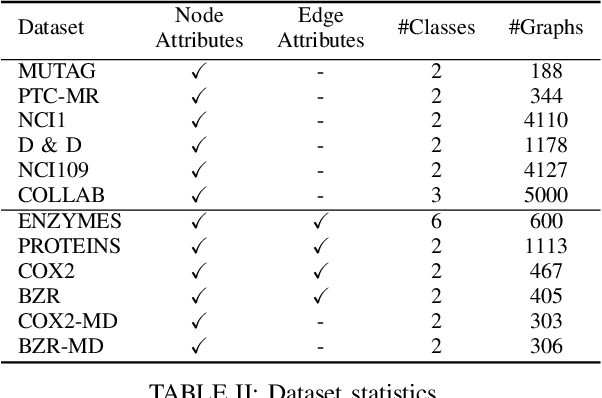
Abstract:We propose a learning framework for graph kernels, which is theoretically grounded on regularizing optimal transport. This framework provides a novel optimal transport distance metric, namely Regularized Wasserstein (RW) discrepancy, which can preserve both features and structure of graphs via Wasserstein distances on features and their local variations, local barycenters and global connectivity. Two strongly convex regularization terms are introduced to improve the learning ability. One is to relax an optimal alignment between graphs to be a cluster-to-cluster mapping between their locally connected vertices, thereby preserving the local clustering structure of graphs. The other is to take into account node degree distributions in order to better preserve the global structure of graphs. We also design an efficient algorithm to enable a fast approximation for solving the optimization problem. Theoretically, our framework is robust and can guarantee the convergence and numerical stability in optimization. We have empirically validated our method using 12 datasets against 16 state-of-the-art baselines. The experimental results show that our method consistently outperforms all state-of-the-art methods on all benchmark databases for both graphs with discrete attributes and graphs with continuous attributes.
ErGAN: Generative Adversarial Networks for Entity Resolution
Dec 18, 2020

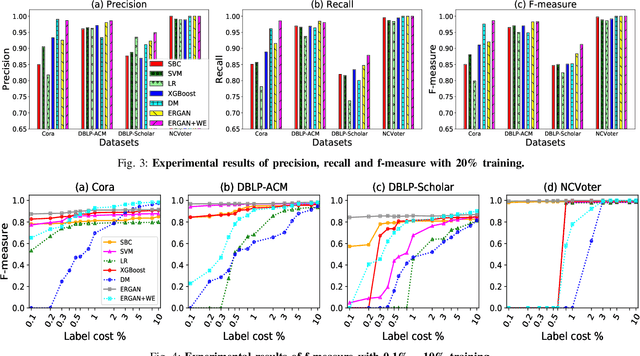
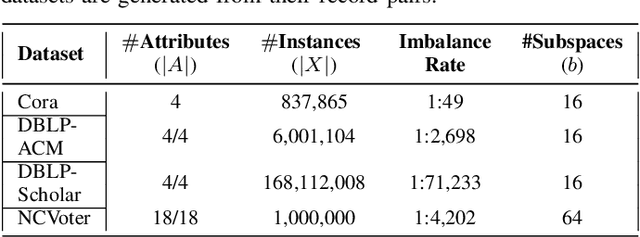
Abstract:Entity resolution targets at identifying records that represent the same real-world entity from one or more datasets. A major challenge in learning-based entity resolution is how to reduce the label cost for training. Due to the quadratic nature of record pair comparison, labeling is a costly task that often requires a significant effort from human experts. Inspired by recent advances of generative adversarial network (GAN), we propose a novel deep learning method, called ErGAN, to address the challenge. ErGAN consists of two key components: a label generator and a discriminator which are optimized alternatively through adversarial learning. To alleviate the issues of overfitting and highly imbalanced distribution, we design two novel modules for diversity and propagation, which can greatly improve the model generalization power. We have conducted extensive experiments to empirically verify the labeling and learning efficiency of ErGAN. The experimental results show that ErGAN beats the state-of-the-art baselines, including unsupervised, semi-supervised, and unsupervised learning methods.
DFNets: Spectral CNNs for Graphs with Feedback-Looped Filters
Nov 15, 2019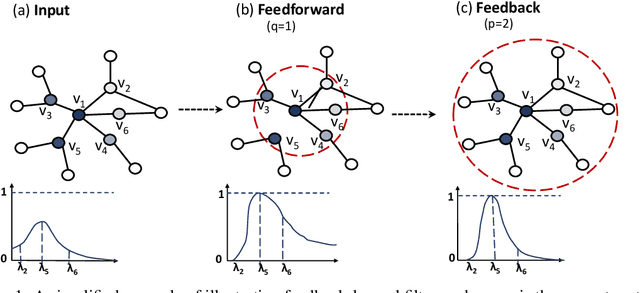


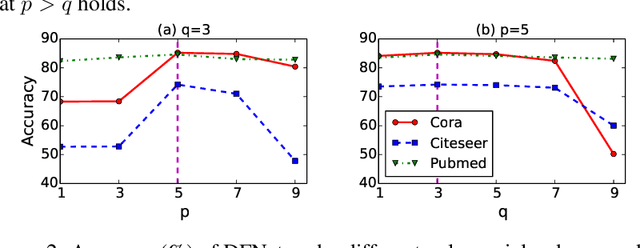
Abstract:We propose a novel spectral convolutional neural network (CNN) model on graph structured data, namely Distributed Feedback-Looped Networks (DFNets). This model is incorporated with a robust class of spectral graph filters, called feedback-looped filters, to provide better localization on vertices, while still attaining fast convergence and linear memory requirements. Theoretically, feedback-looped filters can guarantee convergence w.r.t. a specified error bound, and be applied universally to any graph without knowing its structure. Furthermore, the propagation rule of this model can diversify features from the preceding layers to produce strong gradient flows. We have evaluated our model using two benchmark tasks: semi-supervised document classification on citation networks and semi-supervised entity classification on a knowledge graph. The experimental results show that our model considerably outperforms the state-of-the-art methods in both benchmark tasks over all datasets.
 Add to Chrome
Add to Chrome Add to Firefox
Add to Firefox Add to Edge
Add to Edge